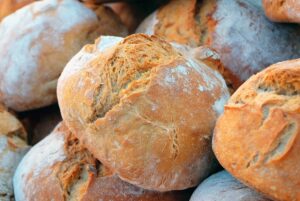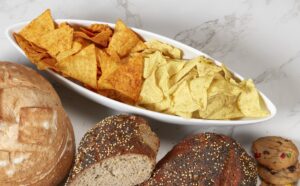Consumers are always looking for ways to improve their diets. Reducing their sugar consumption is one of the most common ways to do so. According to Mintel, 74% of adults in the U.S. believe that a healthy diet should be low in sugar. So when you reduce or replace the sugar in bakery products, what do you replace it with?
When you want to replace or reduce the sugar in bakery products, not all sweeteners will react the same. Natural sweeteners such as stevia, erythritol, monk fruit, and allulose do not have the same effects when exposed to high temperatures during the baking process. Our R&D team found that baking with allulose helps with taste, texture, and color. It not only tastes and bakes like sugar, but it also has a great browning effect.
Our R&D teammate, Charlie Hall, weighs in on why baking with allulose is an optimal ingredient to utilize when replacing or reducing sugar.

The Latest LegacyTMSWEET System
For Baking
Q&A with Charlie Hall, Food Technologist

1. Why did you develop this specific system?
The goal of LegacyTMSWEET SP #9712-50 was to create a sweetener system that would lend itself well to a bakery application. It delivers sweetness intensity, bulking, and browning.
2. Why did you choose to use allulose in the system?
Allulose is a good bulking ingredient when it comes to baking, especially because of its excellent browning capabilities. Exclusively using an ingredient like erythritol can greatly reduce the amount of browning that would ordinarily take place when using sugar. The LegacyTMSWEET system has both erythritol and allulose, which creates the perfect amount of browning.
3. What is the taste profile difference you notice when using allulose compared to other sweeteners?
Allulose is less sweet than sugar, so it needs a boost from high-intensity sweeteners, which is why we have monk fruit extract and Reb M in the system. It helps to carry the sweetness the rest of the way.
4. How long did it take you to develop this LegacyTMSWEET system?
This system was developed over the course of a few weeks. It took several trials to perfect the formula. Included were numerous tweaks with each of the sweeteners in the system and performing multiple sensory tastings.
5. What would you say to a customer that is recreating their current muffin formula to provide a no-sugar-added variety to their customers, but whose formula keeps falling flat?
More than likely, the customer is trying to utilize a 1-to-1 ratio using erythritol or allulose in an attempt to keep the same bulking properties of sugar. If using erythritol on its own, it won’t brown as much as sugar and the customer will likely experience a cooling sensation from the erythritol. If solely using allulose in the formula, the muffin would brown too much, creating an overdone appearance. Erythritol and allulose are also not as sweet as sugar, so the overall sweetness of the muffin would go down. IFPC can help our customers with our Legacy™SWEET formula as it will provide the perfect amount of browning and deliver a well-rounded sweetness profile.
Whether you are looking to reduce the sugar in a current bakery product or develop a new one, IFPC can help. We help achieve that oh-so-sweet taste consumers crave while perfecting the taste, texture, and quality of your product. Get in touch with us today.


